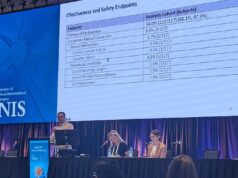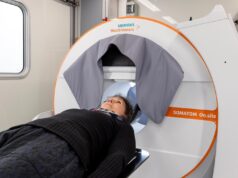The first-in-human robotic-assisted neurovascular intervention has been performed at the Toronto Western Hospital (Toronto, Canada), by a team led by Vitor Mendes Pereira. A press release states that this “landmark” robotic-assisted stent-assisted aneurysm coiling case marks a “significant milestone” in interventional medicine as the first step in building a new treatment paradigm for patients suffering from neurovascular disease. The technology used for the procedure, the CorPath GRX system, has been developed by Corindus, which has recently been acquired by Siemens Healthineers.

Before the procedure commenced on the 1st of November this month, Pereira performed a rehearsal procedure on a Biomodex three-dimensional (3D)–printed flow model of the specific anatomy of the patient, a 64-year-old female Canadian resident. According to the press release, using the 3D model allowed Pereira to develop a plan for the novel robotic procedure and ensure an optimal treatment approach.
During the procedure itself, Timo Krings and Patrick Nicholson, neuroradiologists, provided bedside physician support while Nicole Cancelliere, medical radiation technologist, acted as the bedside robotic technician.
“Precision is a key element of neurovascular interventions, and it is evident to me that augmenting these delicate procedures with robotic assistance can positively impact how we treat patients,” Pereira commented in the company’s announcement. “I felt honoured to perform this procedure and look forward to continuing to support the development of robotic technology to help address access issues of stroke patients in the community.”
Mark Toland, CEO of Corindus, added: “The field of neurovascular intervention is changing rapidly, but there remains a significant need to expand access to care and reduce treatment times.” He further put forward that implementing robotic capability for neurovascular intervention is the first step toward the company’s vision of providing patients access to the world’s best specialists, regardless of their geographic location. “Building a body of clinical research on neurovascular robotics while training physicians to be robotics experts today will allow us to maximise physician impact and reach with remote telerobotics tomorrow,” said Toland.










